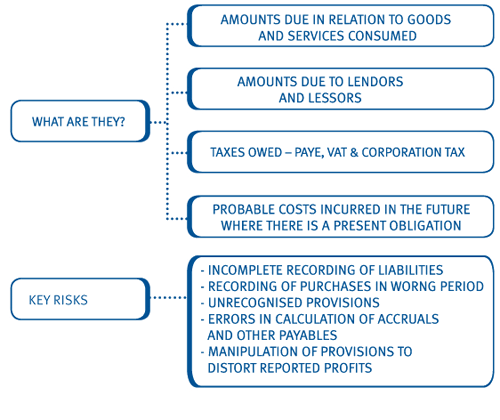A determining whether all accounts payable are recorded. Determining whether all accounts payable are properly classified in the financial statements. C determining whether all accounts payable are recorded in the proper period. The cutoff assertion for accounts payable includes A. The assertion is that all transactions were recorded within the correct reporting period. The cutoff assertion for accounts payable includes A. These obligations may include further penalties obligations if the client delays the payments. Determining whether all accounts payable are. Of these assertions I believe completeness and cutoff for payables and occurrence for expenses are usually most important. Determining whether all accounts payable are recorded in the proper period.
Naim 1134 Accounting Chapter 11 Substantive procedures to examine the cutoff assertion for accounts payable include A. B determining whether all accounts payable actually are liabilities. Determining whether all accounts payable are recorded. 16 The cutoff assertion for accounts payable includes. This can be verified by reading the terms and conditions among creditors and the client. Short Answer Questions 122The internal control questionnaire for purchases and accounts payable includes the following questions. The cutoff assertion for accounts payable includes a. Determining whether all accounts payable are recorded. Determining whether all accounts payable are recorded in the proper period d. Determining whether all accounts payable are properly classified in the financial statements 7.
When a company records its payables and expenses by period-end it is asserting that they are complete and that they are accounted for. Determining whether all accounts payable are properly classified in the financial statements. Determining whether all accounts payable are properly classified in the financial statements. Determining whether all accounts payable are recorded b. Determining whether all accounts payable are recorded in the proper period. Determining whether all accounts payable actually are liabilities. The cutoff assertion for accounts payable includes The transaction-related audit objective of timing is related to the assertion of cutoff The two major balance-related audit objectives in testing payroll liabilities are accuracy and cutoff. Selecting a sample of vouchers and agreeing them to the purchases journal. Determining whether all accounts payable actually are liabilities. The cutoff assertion for accounts payable includes.
Determining whether all accounts payable are properly classified in the financial statements. A determining whether all accounts payable are recorded. This may be due to an intentional act of account manipulation or fraud tends to make accounts payable understated rather than overstated. These obligations may include further penalties obligations if the client delays the payments. The cutoff assertion for accounts payable includes. Selecting a sample of vouchers and agreeing them to authorized purchase orders. This can be verified by reading the terms and conditions among creditors and the client. The cutoff assertion for accounts payable includes A Determining whether all from ACCT Audit2 at Florida Atlantic University. Determining whether all accounts payable are recorded b. All purchase orders.
A determining whether all accounts payable are recorded. These obligations may include further penalties obligations if the client delays the payments. Determining whether all accounts payable are recorded in the proper period. The cutoff assertion for accounts payable includes A Determining whether all from ACCT Audit2 at Florida Atlantic University. The cutoff assertion for accounts payable includes. Determining whether all accounts payable actually are liabilities. This can be verified by reading the terms and conditions among creditors and the client. Determining whether all accounts payable are recorded in the proper period. Naim 1134 Accounting Chapter 11 Substantive procedures to examine the cutoff assertion for accounts payable include A. 40When using confirmations to provide evidence about the completeness assertion for accounts payable.
